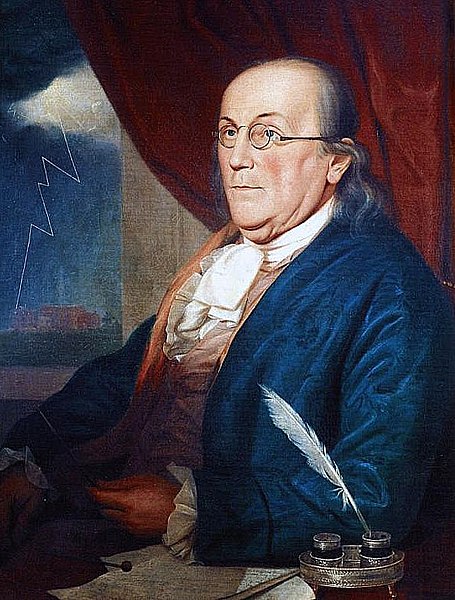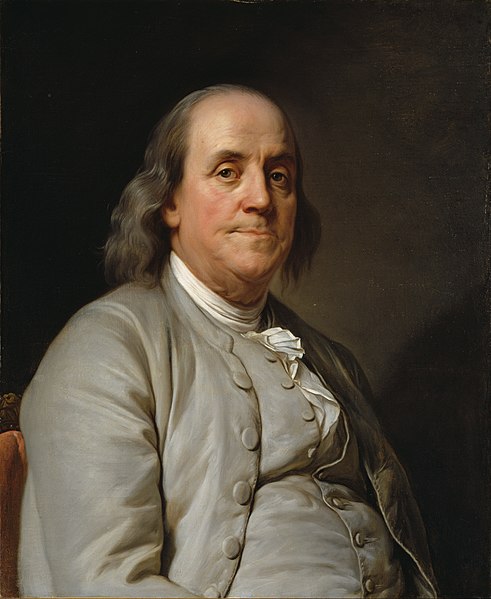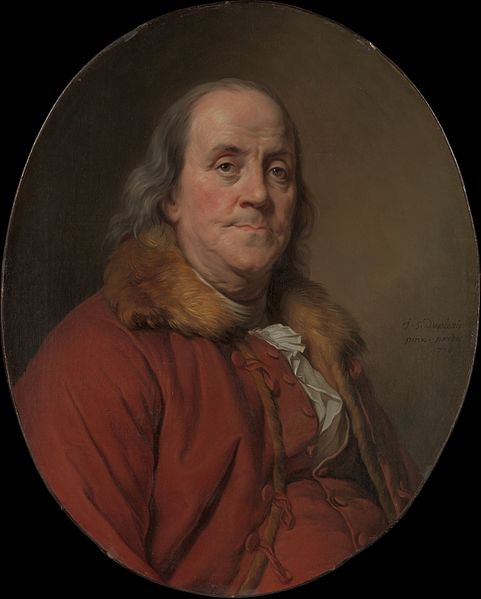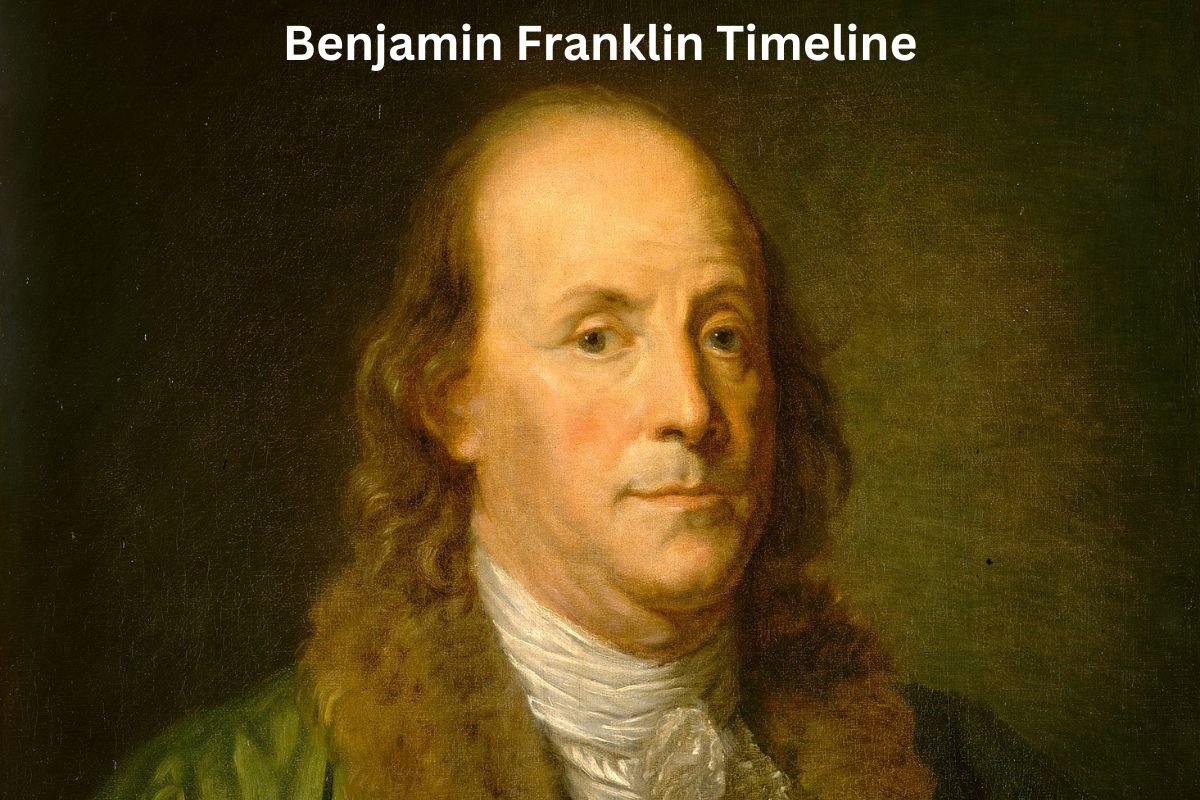Benjamin Franklin, a towering figure in American history, was a polymath whose life spanned the 18th century.
Born in 1706 in Boston, Massachusetts, he emerged from humble beginnings to become a printer, author, inventor, scientist, diplomat, and one of the Founding Fathers of the United States.
His life was marked by remarkable accomplishments, from his pioneering work in electricity to his pivotal roles in shaping the American Revolution and drafting the U.S. Constitution. This brief overview explores the key milestones and contributions of Benjamin Franklin’s extraordinary life.
| Year | Event |
|---|---|
| 1706 | Benjamin Franklin is born in Boston, Massachusetts. |
| 1718 | Franklin leaves Boston and moves to Philadelphia, where he finds work as a printer and begins his career in the printing industry. |
| 1723 | Franklin runs away from his apprenticeship in Boston and starts a new life in Philadelphia. |
| 1727 | Franklin establishes the Junto, a group of like-minded individuals who met regularly to discuss various intellectual and moral topics. |
| 1731 | He opens his own printing shop in Philadelphia and publishes “The Pennsylvania Gazette,” a popular newspaper. |
| 1732 | Franklin publishes “Poor Richard’s Almanack” under the pseudonym Richard Saunders, which contains many witty and practical aphorisms. |
| 1736 | Franklin is elected clerk of the Pennsylvania Assembly. |
| 1737 | He is appointed postmaster of Philadelphia, a position he holds for many years, leading to improvements in postal services. |
| 1748 | Franklin begins his electrical experiments, leading to his famous experiments with lightning and the invention of the lightning rod. |
| 1751 | He is elected to the Pennsylvania Assembly and becomes involved in colonial politics. |
| 1752 | Franklin’s kite experiment demonstrates the electrical nature of lightning. |
| 1753 | He receives an honorary degree from the University of St. Andrews in Scotland, making him the first American to receive an honorary degree from a European university. |
| 1754 | Franklin proposes the Albany Plan of Union at the Albany Congress, a precursor to the United States Constitution. |
| 1757 | He is appointed as the colonial agent for Pennsylvania in London, where he represents colonial interests to the British government. |
| 1765 | Franklin testifies before the British Parliament against the Stamp Act, a tax imposed on the American colonies, and is instrumental in its eventual repeal. |
| 1775 | Franklin returns to Philadelphia from London as tensions between the American colonies and Britain escalate. |
| 1776 | He is a member of the committee that drafts the Declaration of Independence. |
| 1776-1778 | Franklin serves as a diplomat in France, securing French support for the American Revolution. |
| 1783 | He helps negotiate the Treaty of Paris, which ends the American Revolutionary War and recognizes American independence. |
| 1787 | Franklin is a delegate to the Constitutional Convention in Philadelphia and signs the United States Constitution. |
| 1790 | Benjamin Franklin dies on April 17 in Philadelphia at the age of 84. |
Timeline of Benjamin Franklin
1706: Benjamin Franklin is born in Boston, Massachusetts.
Benjamin Franklin was born on January 17, 1706, in a small house on Milk Street in Boston. He was the fifteenth of seventeen children in his family.
His father, Josiah Franklin, was a candlemaker, and his mother, Abiah Folger, came from a prominent New England family.
Benjamin’s early education was limited, and he attended Boston Latin School for only a short time before beginning to work with his father. At a young age, he displayed a curious and inquisitive nature, which would shape his future.

1718: Franklin leaves Boston and moves to Philadelphia, where he finds work as a printer and begins his career in the printing industry.
At the age of 17, Franklin decided to leave Boston due to disagreements with his brother James, who was a printer.
He journeyed to Philadelphia, where he arrived with very little money to his name. In Philadelphia, he initially worked in various odd jobs but soon found employment as an apprentice to a printer named Samuel Keimer.
This marked the beginning of his career in the printing industry, which would play a significant role in his life.
1723: Franklin runs away from his apprenticeship in Boston and starts a new life in Philadelphia.
After working for Keimer for a brief period, Franklin decided to strike out on his own. He left Philadelphia and traveled to London in search of better printing opportunities.
However, he found himself struggling in London and eventually returned to Philadelphia in 1726. He continued to work in the printing trade and began to establish himself as a skilled printer and writer.
1727: Franklin establishes the Junto, a group of like-minded individuals who met regularly to discuss various intellectual and moral topics.
In 1727, at the age of 21, Benjamin Franklin founded the Junto, a club for mutual improvement and discussion. The Junto met every Friday evening and consisted of young men who shared Franklin’s passion for self-improvement and intellectual exploration.
They discussed a wide range of topics, including politics, science, philosophy, and ethics. The Junto served as a precursor to many of Franklin’s later endeavors and reflected his commitment to lifelong learning and civic engagement.
1731: He opens his own printing shop in Philadelphia and publishes “The Pennsylvania Gazette,” a popular newspaper.
In 1731, at the age of 25, Benjamin Franklin established his own printing shop in Philadelphia. One of his most notable publications was “The Pennsylvania Gazette,” a newspaper he purchased and transformed into a popular and influential publication.
Under Franklin’s editorship, the Gazette became known for its wit, informative content, and bold writing style. It played a vital role in disseminating news and ideas throughout the colonies.

1732: Franklin publishes “Poor Richard’s Almanack” under the pseudonym Richard Saunders, which contains many witty and practical aphorisms.
Benjamin Franklin gained widespread recognition for his annual publication, “Poor Richard’s Almanack.” Writing under the pseudonym Richard Saunders, Franklin filled the almanac with practical advice, proverbs, weather forecasts, and humor.
It included famous aphorisms such as “Early to bed and early to rise, makes a man healthy, wealthy, and wise.” The almanac was a bestseller and contributed to Franklin’s reputation as a prolific writer and thinker.
1736: Franklin is elected clerk of the Pennsylvania Assembly.
Benjamin Franklin’s involvement in Pennsylvania politics began to grow in the mid-1730s. In 1736, he was elected as the clerk of the Pennsylvania Assembly, a position that gave him insight into colonial politics and legislation.
He used this role to advocate for various civic improvements and public projects, including street lighting and improved sanitation.
1737: He is appointed postmaster of Philadelphia, a position he holds for many years, leading to improvements in postal services.
Franklin’s appointment as postmaster of Philadelphia in 1737 marked his entry into the postal service. He worked diligently to improve mail delivery and postal operations.
Under his leadership, the postal service became more efficient, and Franklin introduced innovations like mail routes and regular schedules. His contributions to the postal system would later become a significant part of his legacy.
1748: Franklin begins his electrical experiments, leading to his famous experiments with lightning and the invention of the lightning rod.
In 1748, Benjamin Franklin embarked on a series of groundbreaking electrical experiments. His most famous experiment involved flying a kite in a thunderstorm to demonstrate the electrical nature of lightning.
This experiment led to the invention of the lightning rod, a device that helps protect buildings from lightning strikes. Franklin’s work on electricity contributed to his international reputation as a scientist.

1751: He is elected to the Pennsylvania Assembly and becomes involved in colonial politics.
Benjamin Franklin’s involvement in colonial politics continued to deepen. In 1751, he was elected as a member of the Pennsylvania Assembly, a legislative body that played a crucial role in governing the colony.
Franklin’s political career allowed him to advocate for various reforms and policies that he believed would benefit Pennsylvania and its citizens. His ability to bridge political divides and work toward common goals earned him respect in the political arena.
1752: Franklin’s kite experiment demonstrates the electrical nature of lightning.
One of Benjamin Franklin’s most famous experiments took place in 1752 when he flew a kite in a thunderstorm. Attached to the kite was a key, and Franklin demonstrated that he could draw an electrical charge from a lightning bolt and store it in a Leyden jar.
This experiment provided strong evidence that lightning is an electrical phenomenon. Franklin’s work on electricity contributed significantly to the understanding of this field and made him an international celebrity.
1753: He receives an honorary degree from the University of St. Andrews in Scotland, making him the first American to receive an honorary degree from a European university.
Benjamin Franklin’s scientific achievements and intellectual contributions were recognized internationally.
In 1753, the University of St. Andrews in Scotland awarded him an honorary Doctor of Laws degree, making him the first American to receive such an honor from a European university. This recognition highlighted Franklin’s growing reputation as a leading scientist and thinker.
1754: Franklin proposes the Albany Plan of Union at the Albany Congress, a precursor to the United States Constitution.
In 1754, as tensions between the American colonies and the British government were rising, Benjamin Franklin proposed the Albany Plan of Union at the Albany Congress. This plan aimed to create a unified colonial government for the American colonies under British rule.
Although the plan was not adopted, it laid the groundwork for future discussions about colonial unity and served as a precursor to the United States Constitution.

1757: He is appointed as the colonial agent for Pennsylvania in London, where he represents colonial interests to the British government.
Benjamin Franklin’s diplomatic and political skills led to his appointment as the colonial agent for Pennsylvania in London in 1757. In this role, he represented the interests of Pennsylvania and other colonies to the British government.
Franklin’s time in London allowed him to engage with British policymakers and advocate for colonial rights and concerns. However, as tensions between the colonies and Britain escalated, Franklin’s role became increasingly challenging.
1765: Franklin testifies before the British Parliament against the Stamp Act, a tax imposed on the American colonies, and is instrumental in its eventual repeal.
In 1765, Benjamin Franklin was called to testify before the British Parliament regarding the Stamp Act, which imposed taxes on the American colonies.
Franklin’s eloquent and reasoned testimony argued against the act, emphasizing the rights and grievances of the colonists. His efforts, along with those of other colonial representatives, played a role in the eventual repeal of the Stamp Act in 1766.
1775: Franklin returns to Philadelphia from London as tensions between the American colonies and Britain escalate.
As the American Revolution began to unfold, Benjamin Franklin returned to Philadelphia from his post in London. He was well aware of the growing conflict between the American colonies and the British Crown and was determined to support the cause of independence.
1776: He is a member of the committee that drafts the Declaration of Independence.
Benjamin Franklin was a member of the Committee of Five, which was responsible for drafting the Declaration of Independence.
While Thomas Jefferson is credited with writing the initial draft, Franklin and others provided important input and revisions.
The Declaration of Independence was adopted on July 4, 1776, marking the United States’ formal declaration of independence from Britain.
1776-1778: Franklin serves as a diplomat in France, securing French support for the American Revolution.
Franklin’s diplomatic skills were put to the test when he was sent to France as a representative of the United States during the American Revolution.
He played a crucial role in securing French support, including military and financial assistance, which was instrumental in the American victory over Britain. Franklin’s charm and wit made him a popular figure in French society, and he formed valuable connections with key French officials.
1783: He helps negotiate the Treaty of Paris, which ends the American Revolutionary War and recognizes American independence.
Benjamin Franklin was one of the American diplomats who negotiated the Treaty of Paris in 1783, officially ending the American Revolutionary War.
The treaty recognized the independence of the United States and established the boundaries of the new nation. Franklin’s diplomatic acumen was once again instrumental in achieving a favorable outcome for the United States.
1787: Franklin is a delegate to the Constitutional Convention in Philadelphia and signs the United States Constitution.
In 1787, Benjamin Franklin was a delegate to the Constitutional Convention in Philadelphia, where the United States Constitution was drafted.
Despite his advanced age, he played an active role in the deliberations and was a respected voice in the creation of the new U.S. Constitution. He signed the document, which became the foundational law of the United States.
1790: Benjamin Franklin dies on April 17 in Philadelphia at the age of 84.
Benjamin Franklin passed away on April 17, 1790, in Philadelphia, at the age of 84. His death marked the end of a remarkable life filled with scientific discoveries, political accomplishments, and contributions to the founding of the United States. Franklin’s legacy as a statesman, inventor, author, and thinker continues to be celebrated and remembered to this day.
